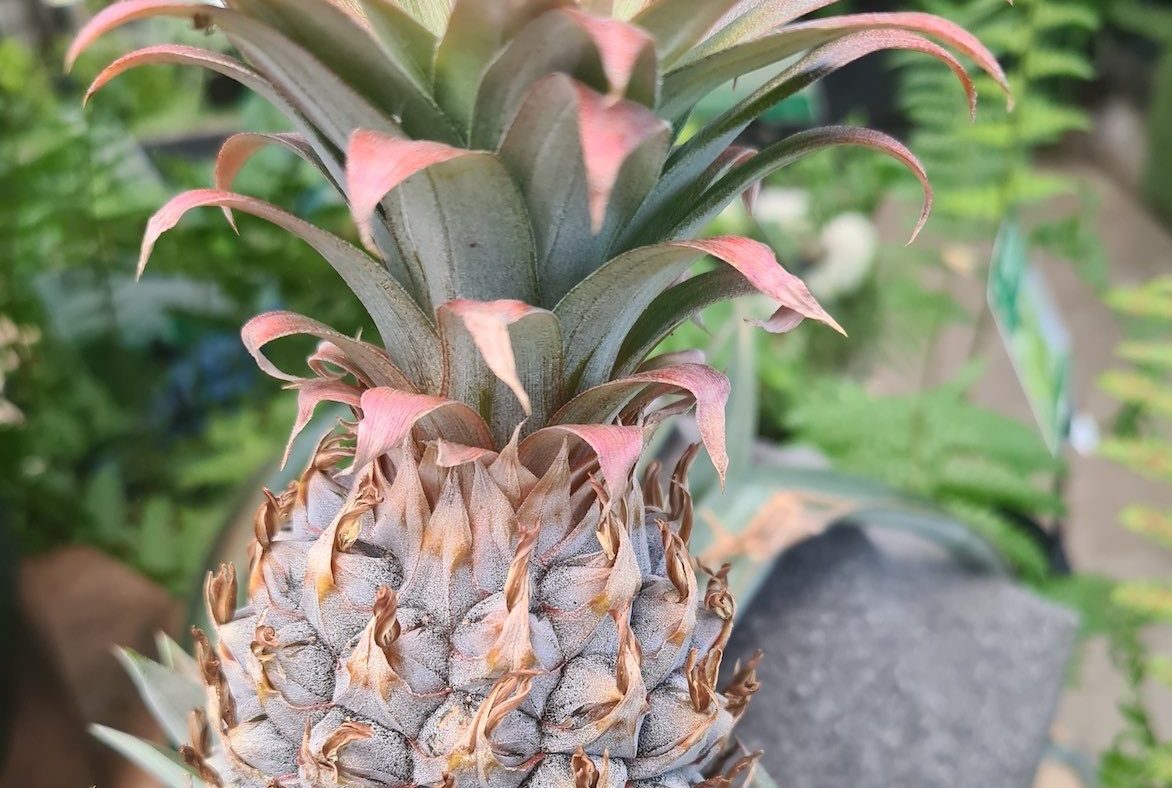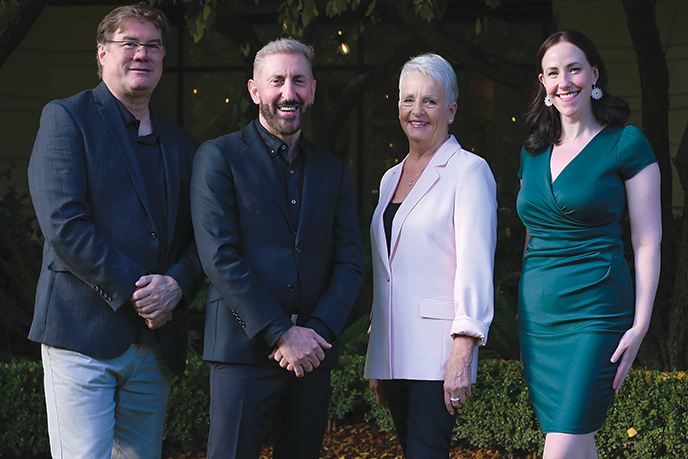
Pineapples, being tropical plants, struggle with our frosts and cold winters outdoors, but anything is possible with a glasshouse, or as an indoor plant with warmth and a lot of loving care, says gardening writer JACKIE WARBURTON.

PINEAPPLES (Ananas Comosus) have long been a favourite in Australia and were planted as far back as 1838 in Queensland, where the heritage-listed Queens Gardens currently stand in the centre of Brisbane.
Pineapples are terrestrial bromeliads and need a lot of sun and humidity to get them growing in our region. They grow well in pots and if the temperature stays above 10C their growth will continue.
It may take a season or two to fruit, but the wait will be worth it and a bit of fun along the way. If the pineapple is getting too big for the pot, remove any suckers to encourage the main plant to fruit.
Pineapples need a lot of water but dislike wet feet, so the drainage needs to be perfect to get them growing as indoor plants. The first signs of fruit being ripe is that it turns from green to yellow and the fragrance will be a good indication that it is ready for picking.
To propagate your own pineapple is as easy as buying a pineapple from a vegetable stall at the local markets and choosing one that has green, healthy, strong leaves.
Cut off the top with a sharp knife leaving at least two to three centimetres of flesh on the cutting. Peel back a third of the leaves and flesh at the base of the leaves to reveal the core.
Leave it to dry in indirect sunlight for a few days to allow the core to callous over and dry out. Once it has dried, place the crown in a jar of clean water to the depth of the leaf-free area and change the water every few days. After a few weeks, roots will form and when there are a good number of them, place them into a potting mix. Feed with a liquid slow-release fertiliser every month or so.

SEDUM Autumn Joy (Hylotelephium spectabile) is a succulent plant with broccoli-like heads and a mass of upright, pink flowers. It blooms from summer to late autumn.
Once the weather cools and the frosts begin, the flowers will still hold their shape and undergo a radiant change as the season progresses. It’s terrific for planting in a dry spot in full sun. It will grow in poor soil, but should be watered until established.
In the dead of winter, cut them to the ground and they will emerge in spring. If the clump is growing too big and growing out of the soil, dig it up and divide with a sharp spade and replant.
MARCH is a busy time in the garden and the last chance to get winter vegetables growing. Green manure crops can go in by sprinkling green manure seeds on to weed-free moist soil and raked and watered in lightly.
Keep the water up to the crop throughout winter and when about 10 per cent of flowers emerge in late winter to early spring, chop into the soil to prepare for planting in October when the soil has warmed.
Jottings
- Fertilise camellias and winter-flowers shrubs.
- Prune extra growth of edible grapevines.
- Plant winter salads such as corn salad, miners lettuce and coriander.
- Fertilise and deadhead roses.
Who can be trusted?
In a world of spin and confusion, there’s never been a more important time to support independent journalism in Canberra.
If you trust our work online and want to enforce the power of independent voices, I invite you to make a small contribution.
Every dollar of support is invested back into our journalism to help keep citynews.com.au strong and free.
Thank you,
Ian Meikle, editor





Leave a Reply